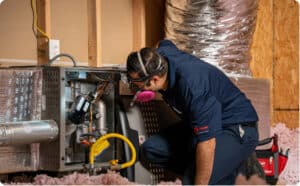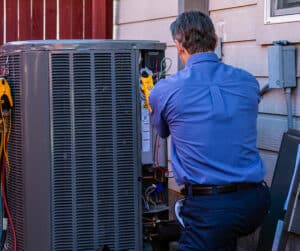If you haven’t given much thought to the placement of air vents in your home, that’s okay. But it’s important to understand that homebuilders have a strategy when it comes to where air vents are installed. We’ll explore the basics of air vents, as well as the pros and cons of having floor vents or ceiling vents.
Air Supply Register and Return Grill Basics
It’s useful to know the basics of how conditioned air circulates in your home, as this can help you explain any issues to an HVAC technician.
How do supply and return vents work?
If you’ve stood in front of an air vent and felt the conditioned air blowing out, you were in front of a supply vent. As the name implies, these vents supply your home with warm or cool air from the HVAC system.
On the other hand, return vents pull air from the room and into the HVAC system. The air is then warmed or cooled and again delivered to the home through the ductwork and supply vents.
Each room should have a supply and return vent
Without a supply vent, the air has nowhere to go and can’t escape the room. This can create an imbalance in pressure, which can lead to air leakage from the room and higher energy bills due to the HVAC unit having to work harder to condition the air in the room. It can also make the room feel stuffy and uncomfortable.
Is there a difference between an air register and an air vent?
Technically speaking, no. Vent describes every supply and return source connected to an HVAC system. Air registers usually refer to the slatted opening that has an adjustable damper to manage the air flow into a room. An air grill doesn’t move and is commonly used to cover a return vent.
Floor Vent Pros
In homes where heating is more important than cooling, floor vents are often used as heat will naturally rise.
- Easier to conceal: Floor vents can blend in with your home’s decor and design, such as how radiant heating blends into hardwood floors.
- High ceilings: Homes with flat ceilings or that need lots of ductwork benefit from floor vents as they normally don’t take up headspace.
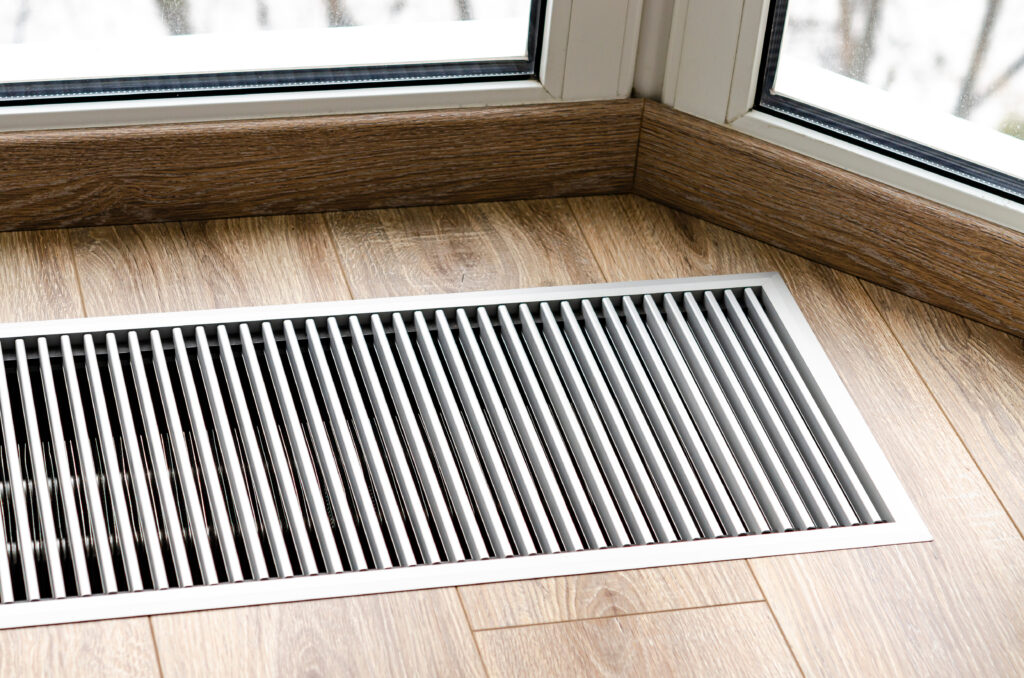
Floor Vent Cons
However, there are two main drawbacks to floor air vents.
- Not aesthetically pleasing: Most floor vents are painted metal and the color often matches the doors and trim color for a monochromatic design.
- Extra noise: Too many homebuilders rush through installing floor vents, sometimes dropping them into place without securing them to the floor. When the HVAC system starts, the vents may rattle and create a cacophony of unpleasant sound.
Ceiling Vent Pros
Ceiling vents are ideal for homes in warm climates because they allow the air conditioner to take advantage of the fact that cool air sinks. This means that the cool air can be circulated more efficiently around the home, resulting in lower energy costs.
- Space saving: If you’re building a new home, installing vents in the ceiling gives back space since most home ceilings aren’t used in the same way a floor is.
- Easy HVAC access: By using the available attic space, you and HVAC technicians have easy access to the system and have a lower initial cost.
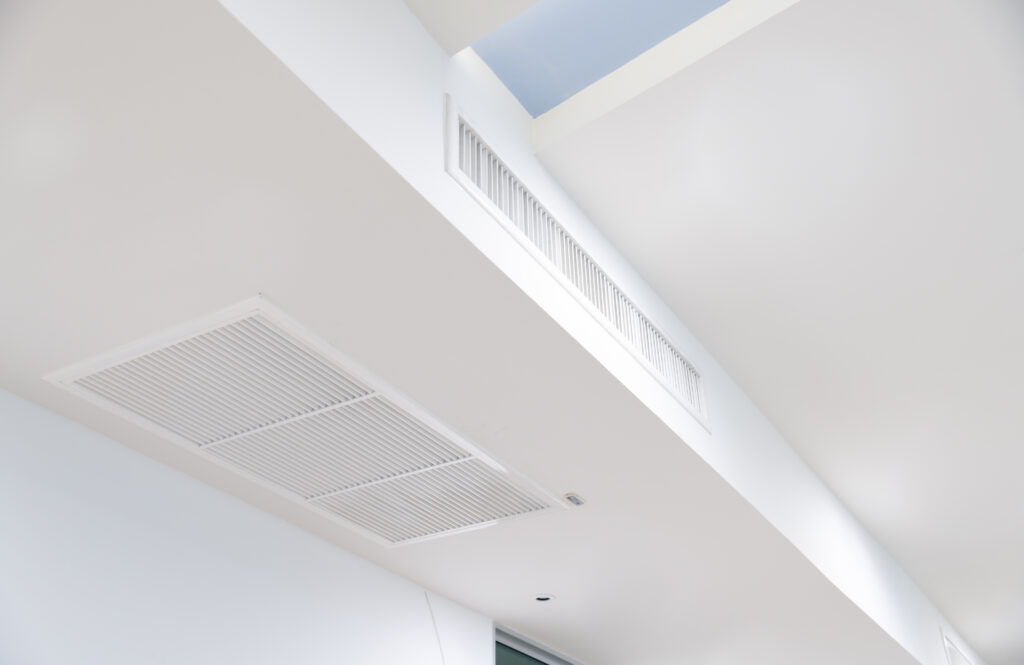
Ceiling Vent Cons
The ceiling air vents might be out of sight, but they do come with a few drawbacks.
- Heat transfer loss: Unless the ductwork is adequately insulated and maintained at all times, you may experience a decrease in comfort during the heat transfer.
- Extra wear and tear on HVAC system: Many attics are subject to extreme temperature swings which adds to the wear and tear on an HVAC system, leading to breakdowns and repairs.
It all depends on your personal needs
The size and number of the vents should be sized and spaced according to the size of the room. Typically, one 6-inch vent is used for every 10-15 square feet of floor space. You’ll want to consult a professional to get the best results.
3 Ways to Help Improve Indoor Air Flow
1. Don’t Block Vents with Furniture
Though this happens more often than not, it’s important to not block the air flow to and from the air vents with furniture. This is especially true if you have floor vents. Try to keep at least one foot of clearance around and in front of the supply and return vents.
2. Replace the Air Filter
If you don’t feel as much air coming from the supply vents, check the air filter. A clogged filter won’t allow an adequate amount of air into the HVAC system and in turn, causes less air to filter into the home.
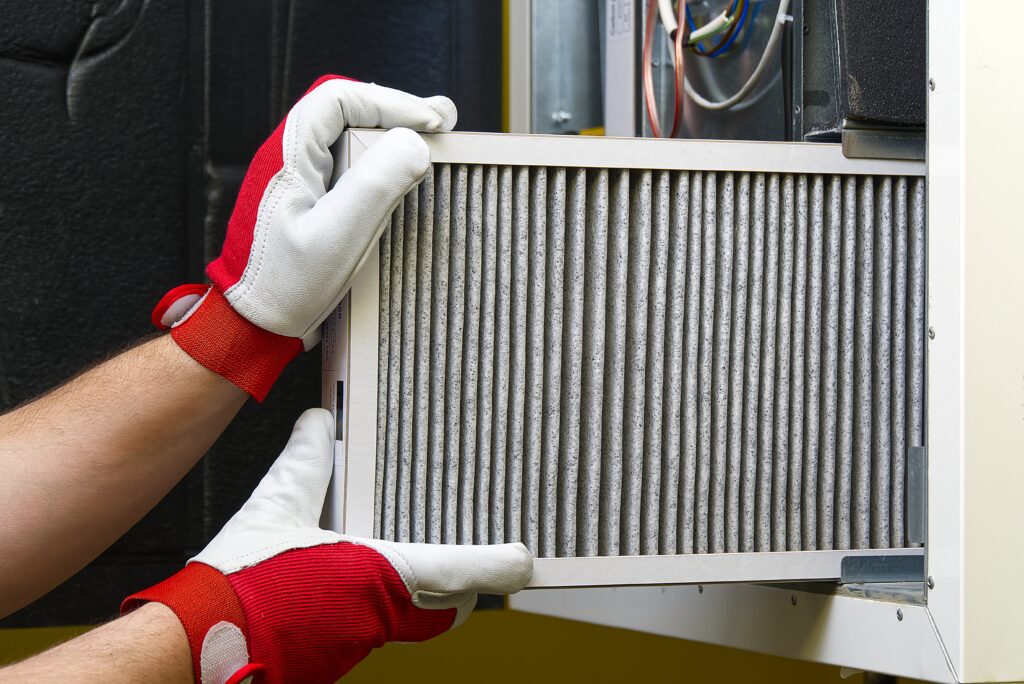
3. Schedule an HVAC Tune-Up
With regular HVAC tune-ups, you can keep dust, dirt, and small debris from building up in your system and ductwork. This allows your air vents – whether they are floor or ceiling – to keep your home comfortable all year round. So don’t forget to invest in regular HVAC maintenance – it’s the best way to ensure a pleasant indoor environment.
Need a HVAC tune-up? Contact the HVAC pros at Service Wizard today.






